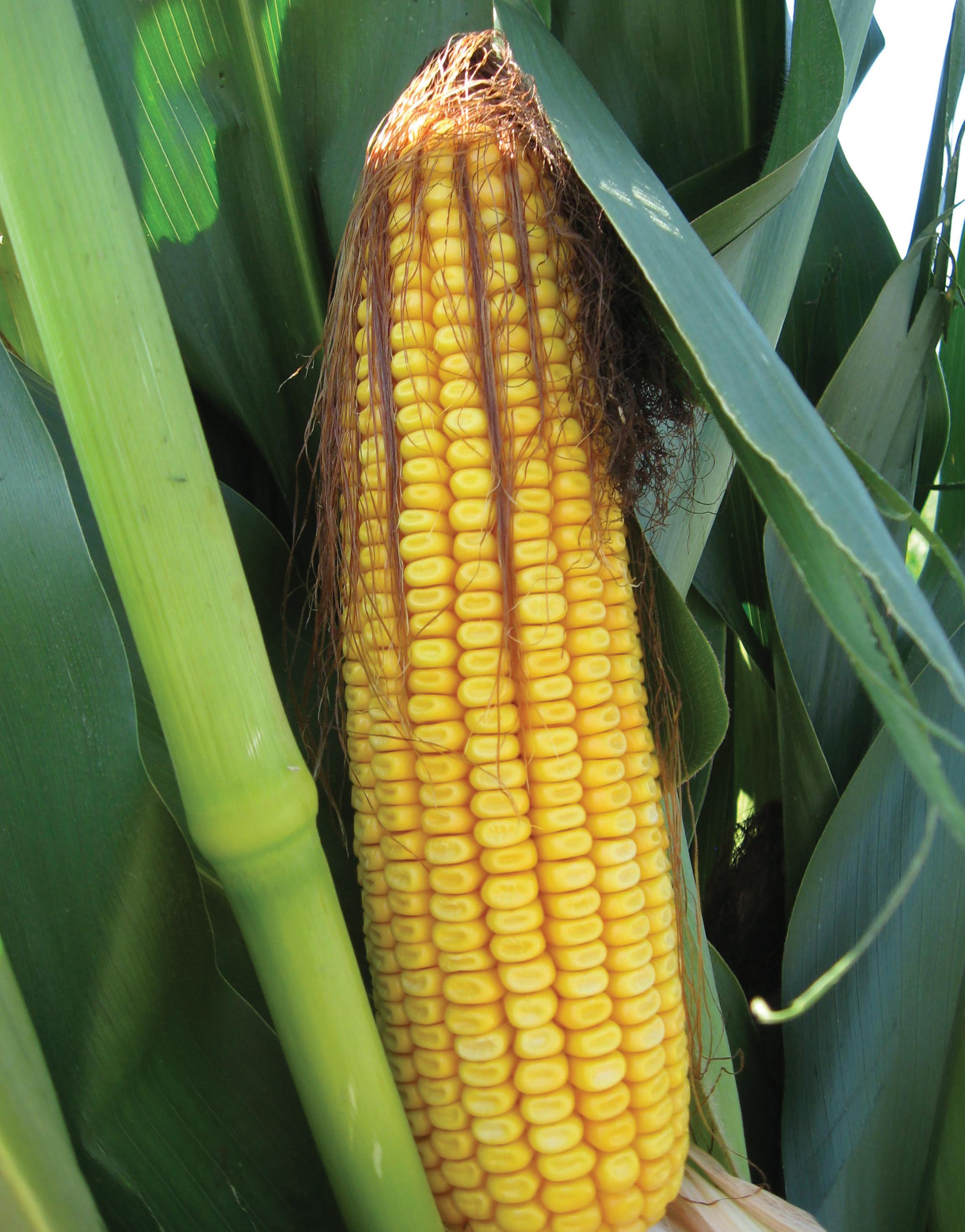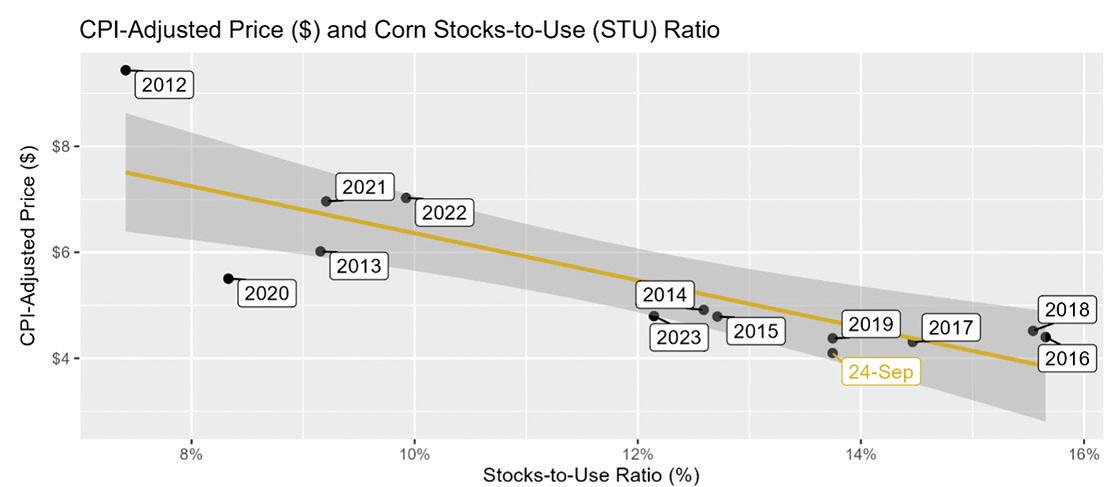





















































Amanda Huber Editor
Let me cut to the chase. ings will get be er. At least that is the word from Texas A&M University’s Agricultural and Food Policy economists Joe Outlaw and Bart Fischer, on efforts to try and stay positive while waiting on a new Farm Bill.
As Extension economists, they are called on to deliver updates at county, regional, state-wide and national meetings. Admi ingly, their job is not always fun, but they believe in giving an honest assessment to producers, rather than sugarcoating it. Although di cult, this is something producers appreciate — an honest, at times blunt — assessment of the situation.
While producers across the country wonder why they should continue producing food and ber at signi cant risk without a viable safety net, especially given that Congress doesn’t seem to value what they do, the economists fully understand this type of sentiment but say there are positives to look at.
“First, while not large in number, there are members in both the House of Representatives and Senate who truly understand how dire the situation is and are absolutely trying to help. It’s all about money and timing, and, in our opinion, if this wasn’t an election year, a new Farm Bill would be signed into law by now.
“Second, we feel strongly that Congress will also see the need and provide nancial disaster assistance to help out in the short term since safety net enhancements that will be included in the new Farm Bill will not trigger payments until October 2026.
“ ird, it has taken a while, but all of the key agricultural stakeholders (general farm organizations, commodity groups, lenders, input suppliers, etc.) are working together and, in unison, are calling for the Farm Bill to be completed. It is important that members of Congress hear a consistent message.”
Finally, the authors say, agriculture pro tability always has been and will continue to be cyclical, which means bad times — like good times — don’t last long before an unforeseen event around the world causes it to change.
University of Kentucky Extension economist and grain specialist Grant Gardner says 2024 may be one of the toughest years for grain producers in the past decade, given the absence of a major event that could drive substantial price increases. is was from his article, “Minimal Price Gains Amid Record Yields: A Tough Outlook for Grain Producers in 2024,” posted on Southern Ag Today in mid-September.
Gardner says, “ e September World Agricultural Supply and Demand Estimates (WASDE) report indicates modest changes in supply and demand for corn and soybeans. e World Agricultural Outlook Board increased their estimated corn yield by 0.5 bushels per acre, o set by a decrease in carryover from the 2023 marketing year.”
In other crops, he says soybean demand also saw a slight increase of 2 million bushels. Both co on and rice yields were cut; however, the reduced yield expectations were o set by lower demand, resulting in no change to the projected season-average price. Corn and soybeans exceed trend yields by 2.6 and 1.2 bushels, respectively, and represent a national high, he says.
“Record yield expectations are driving stocks-to-use ratios, a key indicator of surplus, to levels much higher than in recent years. Consequently, the U.S. Department of Agriculture has projected the marketing year average price for corn to be around $4.10 per bushel, while soybeans are expected to average $10.80 per bushel.
“Currently, domestic consumption and exports of corn and soybeans appear to be stable. Crush (processing) and ethanol production are at or near record highs, while export demand is lower, but somewhat steady.”
Gardner says consumer price index-adjusted corn prices are the lowest since 2011 and soybeans are nearing 2019 lows. “Without a signi cant change in the yield estimate due to drought or overestimation, it is hard to envision a sharp price rise for the 2024/25 marketing year.” CS

CornSouth is a supplement to the Mid-South and Southeast versions of Cotton Farming magazine and to The Peanut Grower magazine for producers in Florida, Georgia, Alabama and Mississippi. To receive CornSouth, visit www.CornSouth.com and click on “Subscribe to CornSouth.”

Corn South presents a partial listing of corn hybrids suited for the Southern growing region. For a more complete listing, contact your seed representative.
P1511YHR
• Mid-season Optimum Intrasect leader option with above-average ear ex o ering yield stability on moderate to productive soils.
• Very competitive root strength with average stalk strength and bri le stalk resistance, plus favorable plant stature provides late-season standability.
• Average northern leaf blight, gray leaf spot and southern leaf blight resistance. Also exhibits excellent tar spot resistance.
• Favorable Fusarium ear rot and test weight.
P17677YHR
• New, Optimum Intrasect full-season leader o ering yield stability, as well as silage production.
• O ers above-average ear ex ideally suited for reduced plant populations on dryland acres.
• Taller plant stature with above-average stalks and roots for acceptable standability.
• Average disease tolerance to gray leaf spot, northern leaf blight, southern leaf blight and Anthracnose stalk rot.
• Favorable Fusarium ear rot and test weight provide a ractive grain quality.
P1608YHR
• Above-average ear ex, drought tolerance Optimum Intrasect with yield stability on moderate to productive soils.
• Dependable root strength with above-average stalk strength, plus favorable plant stature delivers reliable late-season standability for this maturity.
• Strong staygreen with favorable northern leaf blight and average gray leaf spot, southern leaf blight and southern rust resistance provides late-season intactness.
• Above-average Fusarium ear rot and consistent test weight lend to a ractive grain quality in this hybrid.
P1847VYHR
• Late-season Optimum Leptra option for dryland and irrigated grain or silage.
• O ers be er-than-average ear ex suited for reduced plant populations.
• Competitive northern and southern leaf blight resistance.
• Slightly below-average resistance to gray leaf spot with above-average resistance to northern corn leaf blight.
P14830VYHR
• Mid-season Optimum Leptra option best suited for the high production acres.
• Above-average stalk and root strength coupled with moderate plant stature and very good ear ex.
• Slightly below-average resistance to gray leaf spot with above-average resistance to northern corn leaf blight and average resistance to southern leaf blight.
P1289YHR
• Early season Optimum Intrasect option o ers yield
stability in a wide range of environments, including stress prone to productive soils.
• Favorable plant and ear height, coupled with respectable roots and above-average stalks lead to consistent standability.
• Acceptable Fusarium ear rot, above-average Diplodia ear rot with consistent test weight for a ractive grain quality.
• Very competitive northern leaf blight resistance and respectable gray leaf spot, southern leaf blight and Anthracnose stalk rot are key disease scores for late-season intactness.
P13841PWUE – New
• Early season PowerCore Ultra Enlist AQUAmax option with yield stability from low to high yielding environments, but excellent drought tolerance in stress conditions.
• Shorter stature with favorable mid-season bri le stalk and root strength, plus average staygreen and stalk strength provide competitive late-season standability.
• Average Fusarium ear rot resistance and test weight with very strong husk coverage lend to acceptable grain quality.
• Above-average northern leaf blight resistance, but slightly below-average gray leaf spot, southern leaf blight. Southern rust resistance may require a fungicide application.
P13777PWUE – New
• Early season PowerCore Ultra Enlist option with leading




ty, stalks and root strength.
• Average disease tolerance to northern leaf blight, southern leaf blight and gray leaf spot.
• Above-average stay green and excellent tar spot resistance.
NK1056-V - New
• Dependable stalk strength for good late-season intactness.
• Outstanding drought tolerance with dependable disease package.
• Superb green snap tolerance.
• Adapted to Mid-South.
NK1082-DV
• Broadly adapted hybrid for all yield environments.
• Moderate plant stature with great emergence for earlier planting window.
• Semi-flex ear type enables population flexibility.
• Adapted to Southeast and Mid-South.
NK1386-VZ - New
• Excellent disease package allows for management flexibility.
• Dependable performance in droughtprone soils.
• Moderately tall plant with solid stalk strength.
• Adapted to Southeast and Mid-South.
NK1402-DV
• Consistent yield performance in stress environments.
• Superb agronomics with outstanding roots and dependable stalks.
• Dependable disease package for in-season protection.
• Adapted to Southeast.
E114C4-DV - New
• Robust plant type supported by reliable roots and stalks.
• Proven grain and silage yield performance.
• Outstanding green snap tolerance.
• Adapted to Southeast and Mid-South.
NK1701-V
• Very good stalk and root strength for late-season stability.
• Dependable emergence and vigor allow for early planting.
• Moderate plant stature with a very strong disease package.
• Adapted to Southeast.
E117Z7-D
• Dependable staygreen with moderate drydown.
• Strong emergence with outstanding vigor for early planted acres.
• Broadly adapted genetics with excellent silage tonnage potential.
• Adapted to Southeast and Mid-South.
DKC111-30 Brand (111RM)
DKC111-33 Brand (111RM)
DKC111-35 Brand (111RM)
• Attractive, medium-tall plant features semi-flex ear with excellent test weight and good tip fill.
• Medium-high plant populations are recommended for best results.
• Impressive agronomic package with solid root strength, stalk strength and greensnap tolerance.
• Very strong southern rust tolerance.
DKC62-05 Brand (112RM)
DKC62-08 Brand (112RM)
• Versatile with top-end yield potential.
• Very good stalks, roots and drought tolerance.
• Nice drydown and test weight.
• Proven, adaptable performer.
• DKC62-05 Brand is a great refuge option in proven genetics.
DKC63-56 Brand (113RM)
DKC63-57 Brand (113RM)
• Broadly adapted product that has shown strong yields across environments with excellent standability.
• Capability to flex at reduced planting populations.
• Solid agronomics and disease tolerance for versatility in most geographies.
• DKC63-56 Brand is a great refuge option in proven genetics.
DKC65-93 Brand (115RM)
DKC65-95 Brand (115RM)
• Good stress tolerance and strong yield potential across environments.
• Attractive plant type with strong agronomics, strong roots and stalks provide good standability.
• Excellent grain quality and test weight.
• DKC65-93 Brand is a great refuge option in proven genetics.
DKC66-06 Brand (116RM)
• Excellent yield potential, solid agronomics with very good roots and stalks.
• Flex ear.
• Broadly adapted across most soil types.
DKC67-44 Brand (117RM)
• Can perform in low- and high-yield environments.
• Nice ear flex and grain quality.
• Very good disease tolerance but may benefit from a fungicide application.
DKC117-78 Brand (117RM)
• Strong yield performance potential with versatility across growing environments.
• Excellent root and stalk strength with a relaxed canopy structure to shade row.
• Very strong stress tolerance profile.
• Consider fungicides to help maximize grain fill and late-season appearance.
DKC68-35 Brand (118RM)
• Potential yield leader with solid emergence and early growth.
• Flex ear with very good drought tolerance and a white cob.
• Manage late nitrogen and fungicide to maximize potential.
DKC68-94 Brand (118RM)
DKC68-95 Brand (118RM)
• Attractive shorter product with a dense, full canopy showing top-end yield potential.
• Solid agronomics, especially roots, for the Southeast market.
• Medium to medium-high planting populations recommended.
• Product designed and launched specifically with the Southeast and Carolinas in mind.
DKC69-99 Brand (119RM)
• Top-end yield performance across the Cotton Belt.
• Excellent staygreen, test weight and stress tolerance.
• Semi-flex ear.
• Additional above-ground protection with Trecepta Technology.
DKC70-45 Brand (120RM)
• Late maturity with top-end yield potential.
• Robust, eye-catching plant stature with a girthy, semi-flex ear.
• Very good grain quality.
• Versatile across environments. CS
For additional information:
• www.DEKALB.com/myseed
• www.NKCorn.com
• www.Pioneer.com